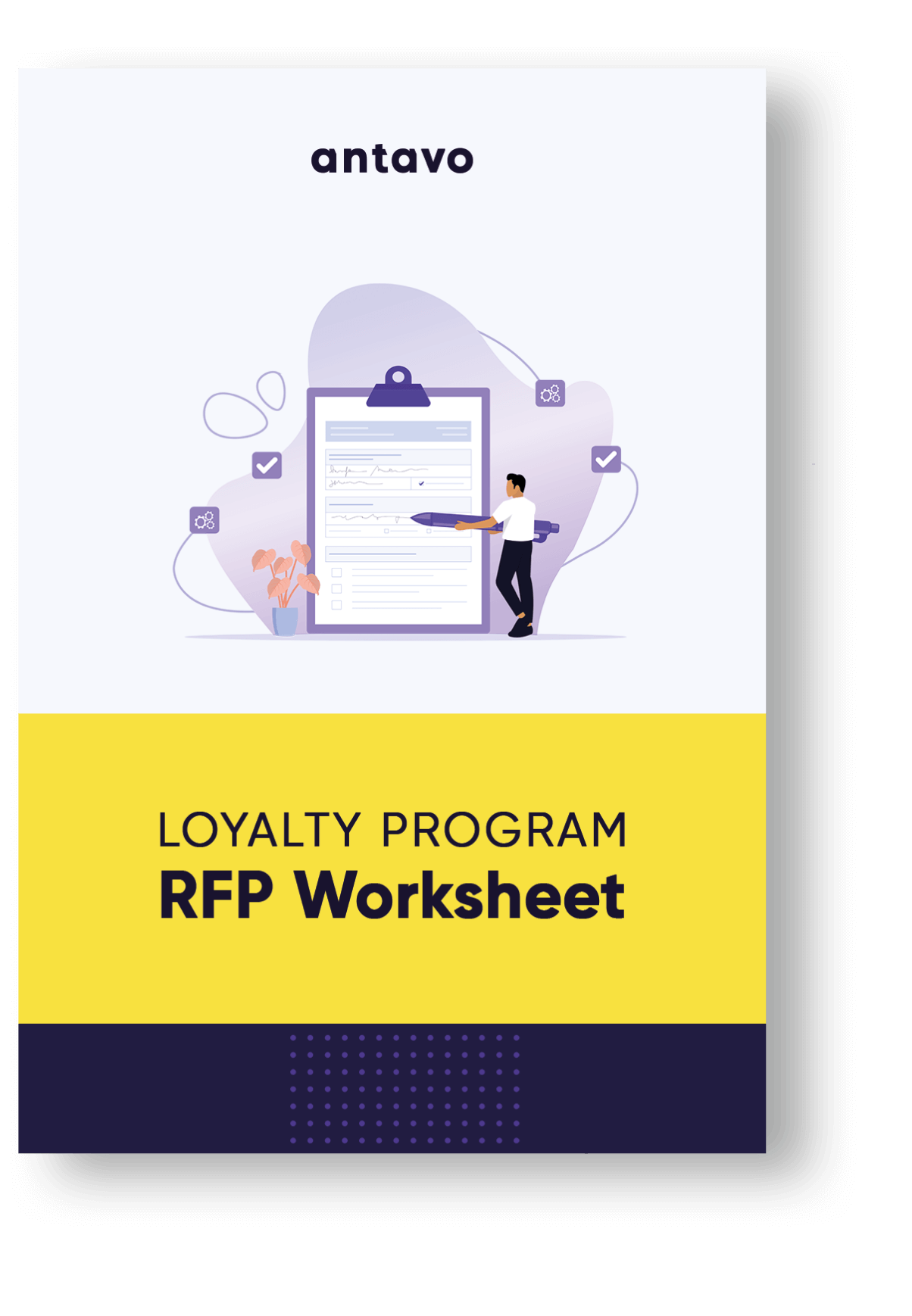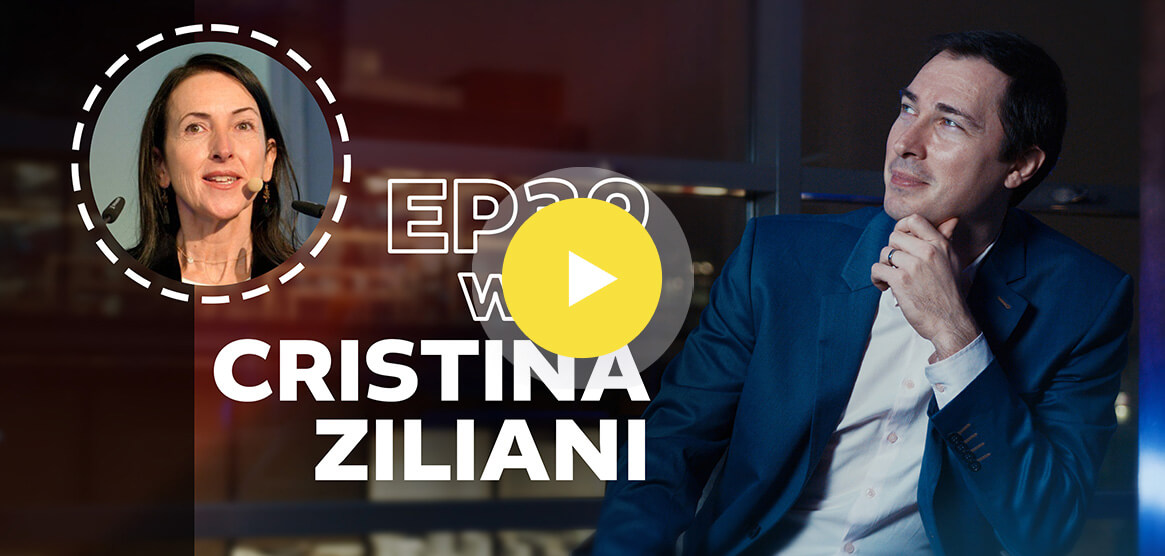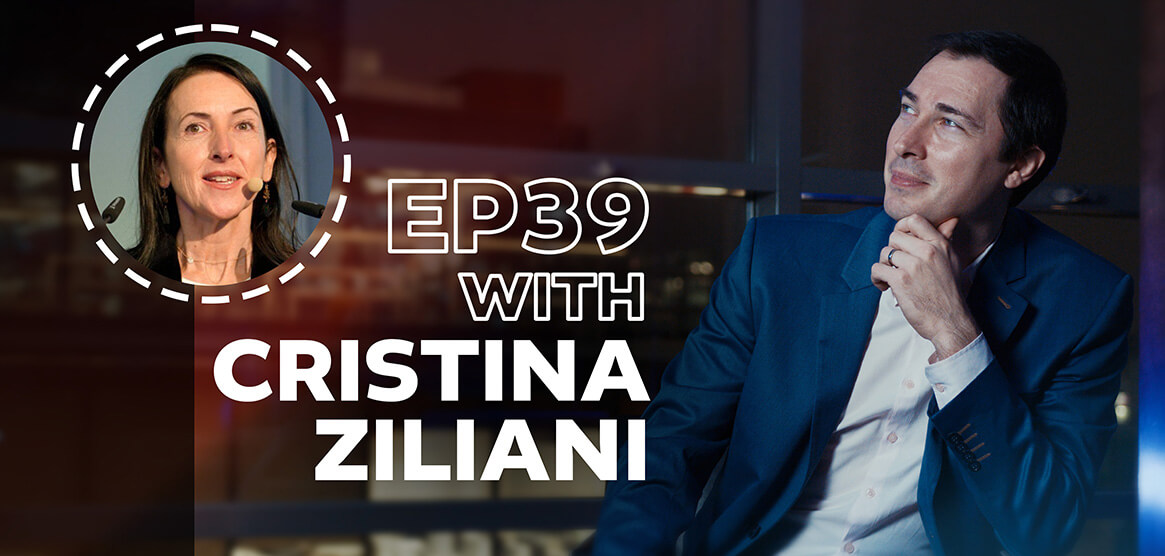During this week’s episode of Antavo’s Loyalty Stories video podcast, our expert guest is Cristina Ziliani, Professor of Marketing at the University of Parma.
The interview for this podcast has been a valuable source for Antavo’s Global Customer Loyalty Report 2024. Make sure to download it for over 30 statistics on loyalty program trends.
On today’s episode, Cristina highlights how the adoption of loyalty programs has accelerated, increasing penetration in Italy from 60% to 70%. Cristina emphasizes the growing importance of Gen Z, who show strong engagement across loyalty schemes, and notes a shift towards sustainability, with companies integrating eco-friendly initiatives into their programs.
Highlights from our conversation with Cristina:
- Build vs. Buy: Integration with legacy systems remains key
- Italian retailers often rely on multiple vendors, needing loyalty platforms with strong interoperability
- Companies are prioritizing personalized communication and deeper insights
- Loyalty education remains limited despite its strategic importance
Learn more:
- LinkedIn profile of Cristina Ziliani
- University of Parma website
- Learn more about Antavo’s educational courses
- Book a demo with Antavo’s loyalty experts
Gabor
Hi and welcome to Loyalty Stories, that is Antavo’s podcast on customer loyalty and loyalty programs. I am Gábor Vigh, one of the partnership managers at Antavo, and Antavo is a technology vendor that empowers loyalty programs all over the world. We help various great businesses such as KFC, Benefit Cosmetics, and very well known global automotive and fashion brands, airports and so on.
In this Loyalty Stories podcast, we dive into the trends around loyalty programs and customer loyalty. We talk with industry experts all around the world to pick their brains to learn what’s new and what’s next for loyalty programs.
Today’s guest is a very special person, a true ambassador of loyalty. She has been a respected professor of marketing and loyalty at Parma University in Italy for around 20 years now, an author of many books about loyalty marketing, and a frequently invited professional to many different retail, loyalty and marketing conferences.
Actually, this is how we met at the Loyalty Summit in Zurich in March 2023, so please welcome Cristina Ziliani. Buongiorno, Cristina. Come sta? How are you?
Cristina
Buongiorno, Gabor. Hello, Gabor. It’s a real pleasure to be here today with you and thank you for the nice introduction.
Gabor
And thank you very much for accepting our invitation for today’s podcast. And first, Christina, I know I thought very, very briefly about your extensive career so far, but can you please introduce yourself for the audience?
Cristina
Thank you. Yes, well, you said the main things. I am an academic. I started working on loyalty in the late 90s with my PhD thesis as I was observing the beginning of loyalty schemes in the supermarket industry in the UK where I was doing my studies. And since then, I’ve continued teaching marketing and retailing.
And then we developed specific courses in loyalty management and CRM at the University of Parma, where I’ve been pursuing my career. And we started 23 years ago a Loyalty Observatory. So the mission of the observatory was and still is to help Italian companies and today also international companies develop a customer culture and orientation to customer retention.
And so we do academic research, applied research, consulting, training, and we disseminate results for our research and case studies from all over the world at our events. We have physical events and webinars, we write white papers.
And one of the most interesting sides is educating the younger generations of loyalty managers in our master courses. So, yeah, it’s a lot of work all revolving around loyalty.
Gabor
Wow, this sounds very, very interesting, Cristina. So you are looking at loyalty through the glasses of a scientific person, which is very great and exceptional, I think. So I think knowing this, you can consider this also a warming up question, but I’m very interested to understand what is your favourite loyalty programme then and why.
Cristina
This question is a bit tricky. Why? Because you know my observatory cooperates with many companies so I’m sure if I name one then 20 others will call me and say why didn’t you mention ours? So let me say there are many, there are many good programs in our country.
And one thing that maybe we can discuss later is due to the fact that loyalty programs are becoming more and more common in Italy. So there are very nice examples. Let me cite a few just because we feature them in our conferences and webinars. Solgenia in the energy business is a very interesting one. You might want to look into.
Lavazza in the fast moving consumer goods, it’s coffee, that’s another very interesting one. Chisalfa in the sport and goods area is a very interesting one, so I hope nobody else you know will be annoyed because I’m not mentioning them, but those are interesting things because they may have some you know twists that make them special.
Gabor
I’m very curious about Lavazza’s program because I just love their coffee. Based on your career, Cristina, what is your work that you are the most proud of?
Cristina
All right. The work, that’s interesting. You know, we do research. So we’ve written five books, and I say we because it’s me with my researchers, you know, and my colleagues in the observatory, many international papers in international journals.
Actually on Friday, we won a prize for the best research paper of the Italian Marketing Association with a work on loyalty programs and generations. But I think, thank you, thank you. But I think probably what I’m most proud of is having been able to create a community of loyalty managers, CRM managers, digital marketing managers.
Gabor
Congratulations!
Cristina
that meets every year at our annual conference in presence. We had the conference last week, every year in October, and it’s Italy, so it’s not an international conference, but we were able to gather 500 people. And over the years, I remember when we started the conference, the first edition, we had 40 people, and it was just in a classroom at the university, and then we had to get bigger and bigger rooms.
And this year we had to get the Philharmonic Theater in the city of Parma to host everybody. So I think, yes, this is what we are proud of. We had a mission of developing a culture of loyalty and probably all these people coming to Parma every year to discuss loyalty trends. That’s the accomplishment that I’m very proud of.
Gabor
Oh, that sounds great, Christina. Yeah, congratulations on those. I know that the building of the Philharmonics is really impressive in Parma. So yeah, well done.
Cristina
Yeah, you know about that. That’s very interesting that you know. It’s an old pottery from the 1800s that has been turned by famous architect Renzo Piano into a concert hall. Yeah, oh I’m amazed you know about that.
Gabor
Yeah, I’ve been to Parma and when I was visiting the city, I saw a couple of really nice buildings, from Renaissance up to like New Age ones, but I like the other architecture to be honest, but yeah, it was a really, really nice one. I don’t know how, I think I just spotted it accidentally, but yeah, I still remember.
Cristina
That’s nice.
Gabor
Because you have this observatory on loyalty, Cristina. You know the history of loyalty from the past two decades. But if you look back maybe like three years in time, what do you think? What were the big changes in the loyalty space?
Cristina
in the last three years, you say? Well, definitely, I think that the big stop that we had due to the COVID pandemic brought loyalty to the forefront. We were reading every day of companies, they were no longer in touch with their customers because for example people were not going to physical stores and it became so evident that if you had a customer database, if you had developed relationships with your customers, then your business was not disrupted by this incredible thing that happened.
Companies, even those that were kind of you know either skeptical about loyalty or just not serious about it, or they didn’t have loyalty in their radar, like companies in the fast moving consumer goods, for example, they started thinking more seriously about getting a loyalty strategy. So that was a big change. And in fact, I have a data point that’s interesting.
The penetration of loyalty schemes in Italy had been set on the 60% mark in the B2C sector for many, many years. And then over the past two years, it just moved to 70%. We measured it this year, last year, and it just jumped from 60 to 70. And it apparently it is staying there. So I think, you know, that was one major step forward adopting these things.
And another interesting trend, which is not limited to the past three years but of course is connected, is companies consistently declaring in our surveys for example that they want to do more personalisation, meaning you know personalised communication or personalisation of touch points where it’s possible, and they want to extract more insight from data.
So both things, they point to the fact that companies are also moving from the stage where their loyalty strategy is simply having a loyalty scheme to a stage where their loyalty strategy is doing CRM. So that’s the other thing, CRM is really settling down as the situation where a lot of Italian companies are, with all the consequences that we have.
Gabor
Great, and did anything surprise you, Cristina? Like any program design or loyalty strategy that just appeared suddenly on the market and became maybe a trend?
Cristina
That’s interesting. I think two things I’ve noticed. One is how quickly many companies embraced sustainability with their loyalty programs at different levels. Let me say that it’s also a little bit of a trend, you know, this ESG and sustainability commitment.
In the beginning, it was easy to see that it was a little bit of an add-on to loyalty programs. The company was not really committed, but if the customer wanted to donate their points or their cash back, then they gave you the option. The company was not investing, it was the customer investing his own resources.
From that level, which was very common, we’ve seen companies moving towards real investment, meaning we’re giving you points, we’re giving you cash back, we’re giving you something, if you display behaviors that are in line with ESG, with environmental sustainability and so on. So the companies are really investing now.
And then some companies really are investing in, for example, developing tools to help consumers be educated about sustainability, learn more. So that’s also a long-term design for a loyalty scheme that wants to embrace sustainability. So that’s one trend.
The other very interesting phenomenon, and that’s also another opportunity for making companies reflect on how important a loyalty strategy is, is inflation. Because due to inflation, companies are forced to reflect on being very clear in their value proposition to consumers. And if they have a loyalty scheme, it is possible to move more benefits to members and not.
You know, distribute benefits to whoever, you know, walks into your stores. So, for example, in supermarket retailing all over Europe, not only in Italy, we’ve seen many companies and you’re based in the UK, so you’ve seen this in the UK as well. Many companies are moving a lot of the benefits that they were giving away to anyone under the umbrella of the loyalty scheme, so making it more valuable to be a member.
So that’s the other trend that I’ve seen, helping consumers face the price increases due to the inflationary times. And it’s very good to do that with your loyalty program, very easy too. So yeah, that’s another trend. And Gabor, you have to stop me because the problem with academics is that we talk and talk because the students usually don’t complain. So please stop me because I talk too much.
Gabor
No, that’s absolutely fine, Cristina. I tried to behave like a good student today. I’m taking some notes because it’s very, very interesting that you’re sharing with us, Cristina. So feel free, you know, we have the time and I’m more than happy to learn more with the audience as well. Yeah, but it’s very interesting to see the trends, what happened and what you think it was like very important in the past couple of years. And if we turn towards the future in loyalty programs or in the world of loyalty, what do you think that the main two fresh trends will be?
Cristina
That’s interesting. Well on the one side more than a trend I see an opportunity which for the moment is still there to be grabbed which is understanding more about Generation Z, you know, adults who are up to 26 years of age.
Recently, we have done this piece of research on loyalty in generations and we’ve also asked companies how strategic the Generation Z was for their marketing strategy. And surprisingly, despite the fact that I’m quoting now some international data, Generation Z is going to be 27% of the global workforce in a year and a half.
So it’s here, it’s a quarter of the global workforce. And this matters because these people, they have omni-channel habits. They are used to personalization, they are used to online, and they are not less enamored of loyalty tools than older generations. This is a finding from our research.
Participation in loyalty schemes is the same across generations. There are no statistical differences between the generations. So these people can be engaged, they like to be engaged, but still Italian companies don’t see these generations as strategic. So the trend of the growth in power and influence of this generation is there, but I think companies need to reflect on it.
And if we stay on the demographic trends, Italy is also in a very peculiar position as far as the elderly, because share of the population who are more than 65 years of age is 23% in Italy, which is huge compared to something like 4% globally.
So I think research should be done by companies in how, you know some services, some customer experiences, because you know loyalty today revolves around providing you know satisfactory customer experiences, so how can they be adjusted to be better suited for you know elderly or let’s not say elderly people who are over 65 years of age, so these are two modern trends, we will see if they become trends, but these are two demographic opportunities that should be looked into.
As far as trends, reading your report in the previous years, I’ve seen some features that you recognize internationally like in loyalty schemes, like buy now pay later, subscriptions, these two things we ask every year to Italian companies if they’re going to develop those in their loyalty schemes. And even this year, surprisingly, this is not the case. So this is another interesting finding, you know. So it’s a global trend. It’s two global trends, but not so much in our country yet. So I’m interested in seeing if things are going to change.
Gabor
Yeah, it’s very interesting and sometimes in November we had the interviews last year to come up with last year’s Global Loyalty Report. I think things were just changing too quickly and maybe different trends were picked up from the world of loyalty. Yeah, but hopefully these will be coming back or will be amplified, I would say. So yeah.
Yeah, but great insights and I completely agree with you, Cristina. I think loyalty programs for Gen Z is gonna get important in all markets. So, for example, here we are working with KFC in the UK and Ireland, and their loyalty program was about the Gen Z. So they wanted to have instant rewards. They wanted to have gamification of the loyalty programs.
So I would say that this new mobile first loyalty concept for them was specifically designed for GNZ and maybe millennials. So yeah, hopefully we will see more of these in the future. And now that we talked about the strategy and concepts and what should be important, what do you think, Cristina, how a loyalty technology company should be supporting this? What are those not even nice to have, but have to have features in loyalty technology that needs to be there.
Cristina
That’s an interesting question. I think maybe asking loyalty managers more than me would be, you know, people who are more seeing, let’s say, platforms every day comparing features. So, of course, I don’t have a complete overview. But we monitor also the market of vendors of loyalty, CRM customer experience services and tools.
So part of our yearly survey is devoted to pulling them and trying to understand what they see on the market. So let’s see, on the one side it’s interesting to see that Italian companies, I’m speaking of brands now and retailers, you know, users of technology, they tend to work with many different companies at the same time, many different vendors.
I don’t know if this is the case abroad, especially because maybe you monitor very large companies compared to Italian companies whose size is smaller in general. So maybe they can’t afford a huge investment in one platform and they put together different bits and pieces all the time.
So I think one feature, which is important is being able to have interoperability, being able to connect your tool with other tools that the companies may have. Another very interesting feature of Italian brands and retailers, many loyalty programs are very old. They’ve been on the market for more than 10 years. So they have legacy systems, software that has been developed in-house.
So you know all these very specific features that vendors need to deal with. And another thing would be for vendors probably, but this is true everywhere, to understand the business profoundly. I talk with loyalty managers all year round and what they say.
We’ve seen this tool, we’ve seen this other tool. They look good on paper, but then when you talk with the people who are supposed to assist us, you see that they don’t really understand our business in depth. So more than the tools, I think the people should be trained very well in, you know, the economics and the dynamics of the business they’re going to support. At least this is the need that I hear from managers, a deeper understanding of the company needs and the company culture and the business forces in the industry.
Gabor
Great, thank you Cristina. And if we just stay for one more question at the technology side, it’s a very common question that occurs and I’m not sure if you are able to answer it or not, but would you say buy or build in-house loyalty technology?
Cristina
Well of course I can’t give any advice I can give you data from I would say two years ago we run one edition of our survey and we asked companies what their solution was and I remember it was almost 50-50 so you know there were companies that were developing in-house and companies that you know were using the market.
So this is one answer, there’s no perfect solution. And also it depends a lot on how the loyalty approach evolved in the company. As I said, newcomers to loyalty, they can start from scratch. It’s like e-commerce, you know, 10 years ago or 20 years ago. If you started early, probably you built your own solutions and then you put a lot of things on top.
All the time, you know, and the stack came out, you know, developed little by little. And then if you’re a latecomer on the other side, you can benefit from a supplier’s market that has matured a lot. For example, I see solutions today that didn’t exist years ago. The number of providers has increased. And in the past, it was simply difficult to find someone, apart from maybe a few of them big companies, you know, with a specific loyalty solution.
So let me use this expression. The solutions have been commoditized in a way. They are more available than in the past. So probably it’s easier to buy on the market, but still, of course, there is a lot that needs to be done in-house to connect the solution to the systems.
At least the companies we work with, we work a lot with retailing and retailing has a big technology legacy that you have to come to terms with. So probably it’s different in other industries. And again, as I said, I’m not an expert on the technology side, but this is a bit of what I can share.
Gabor
Yeah, but thank you so much, Cristina, for sharing the data. And I have got one last question for you. And as a professor, you will like it, I think. And I am very excited because this is the first time I can ask this question because it’s perfectly suitable for you. So if you were giving an advice to a 25-year-old loyalty manager, or your students as loyalty managers who would want to become head of loyalty pretty soon, what would your advice be?
Cristina
That’s a very nice question. I think I said in the beginning we’ll run a master course in marketing where we teach specifically loyalty, CRM, e-commerce, analytics. So let me joke by saying well of course it’s good if you take our master course that will give you the background but that’s just joking as I said.
No, seriously, the first thing is getting young, brilliant graduates interested in careers in loyalty in the first place. So going back to your question, if a young 25-year-old is already interested in a career in loyalty, then everything is okay already. The problem is that there are lots of brilliant graduates, for example, from business administration, statistics, data science, who are not aware of the possibilities of a career in loyalty and CRM. And so that’s the point.
For example, as far as university is concerned, our university is the only one with a specific topic, no, teaching loyalty management and having an exam in loyalty management during your graduate studies. So more universities should be offering loyalty management courses, customer experience management courses. There are CRM courses but very often what I see the loyalty part is missing. Also because loyalty makes a lot of sense in terms of long-term profits like you know customer lifetime value stuff.
Why not loyalty management courses in finance programs, both at undergraduate and graduate levels? So I turned your question upside down. It’s the university who should make brilliant students more aware of the fact that loyalty is a very important building block of the company strategy and the company profits so that they get an interest in loyalty.
Gabor
Yes, I 100% agree with you, Cristina. I remember my courses, I studied economics and we had marketing courses of course, but we haven’t talked about loyalty. Digital marketing was there but not loyalty. So I really hope that this conversation and this whole loyalty stories series will inspire the audience or people who listen to it to find out more about loyalty and maybe commit or start a career in loyalty. So I really hope that we will be able to open eyes. Great, Cristina, is there anything else in mind that you wanted to share with the audience today?
Cristina
Well, first of all, thank you for hosting me. Just, you know, I would like to share the fact that we have a website, Osservatorio Fidelta, that’s Loyalty Observatory in Italian, www.osservatoriofedelta.unipr.it, and we are on LinkedIn. So because of our mission of getting connected with, you know, professionals and people who are interested in loyalty. If anybody wants to get in touch, see our work. A lot of our work is in Italian but not all of it and it’s free on our website so yes please get in touch.
Gabor
Great, thank you, Cristina. I think Google Translate works fine on the website anyway, so it’s getting better and better when it comes to translating Italian to English or any other languages. Yeah, and thank you so much, Cristina, for being here with us today. I really enjoyed our conversation.
I think, yeah, one of my favorite was that you are really working on the mission of developing a culture in loyalty, building up community, and the fact that you are meeting with your graduated students, lawyers, managers, it’s brilliant initiative. I think many universities should copy this kind of action.
Also, when we were talking about the future trends of loyalty, like how loyalty programs are great to overcome inflation and how they are shifting, offering these benefits to the loyalty members versus non-members, and also how companies need to start understanding Gen Zed and also start getting loyalty programs for the elderly generation as well. I think these were brilliant insights. So thank you so much, Cristina.
Cristina
Thank you Gabor, it was a real pleasure. This is all we do.
Gabor
And for the viewers, wherever you listen to us, be it on a podcast platform, YouTube or LinkedIn, please like this podcast and subscribe to our channel, because in this way, you will get the notification when the next episode is out. Also, tell us what you think about loyalty in the comment section below. Visit antavo.com to discover your next loyalty software. Antavo is the next generation loyalty program technology company used by global brands like KFC, Benefit Cosmetics, Automotive, fashion brands and airports all over the world.
But also don’t forget to visit the research website of Parma University and also check out Cristina’s LinkedIn page to find out more details of her excellent work.
So thank you and see you on the next one. Bye for now!
Great, thank you so much.
Cristina
Thank you.










